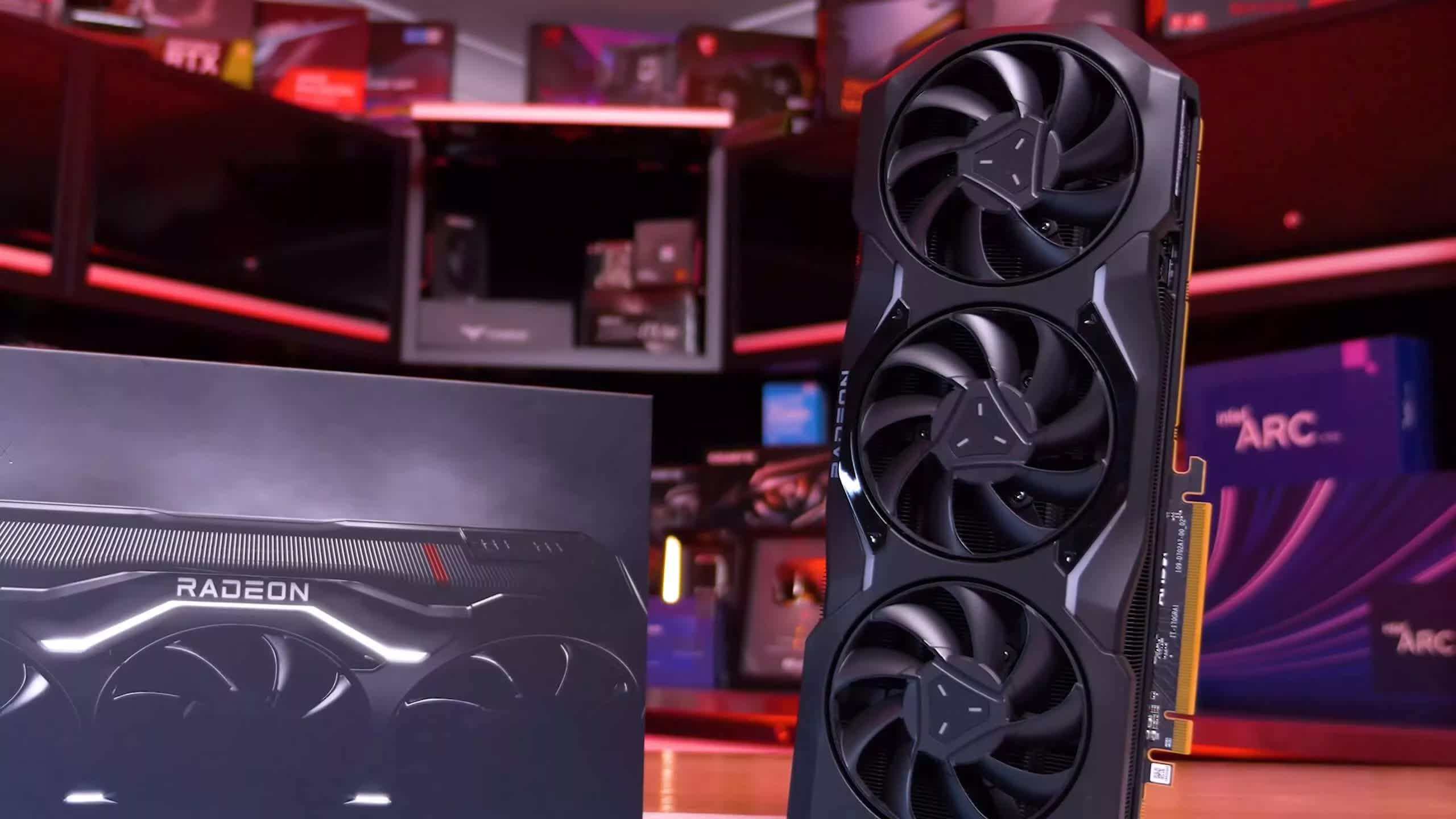A hot potato: It seems that AMD will avoid competing with Nvidia when it comes to the next generation of flagship graphics cards. A Team Red executive has just confirmed that releasing cards in the Radeon RX 8000 line to match Nvidia's top RTX 5000 GPUs won't be a priority. Instead, AMD will be focusing on its mid-range and lower-end products to increase the company's overall market share.
We've been hearing leaks and rumors that AMD isn't going to release cards in its upcoming RX 8000 series to compete with Nvidia's top-end enthusiast Blackwell cards – i.e., the RTX 5080 and RTX 5090. One such example came in May, when a leaker said that AMD's RDNA 4 GPUs would use 18Gbps memory to keep prices down and power levels in check.
Only 18Gbps �"
– Kepler (@Kepler_L2) April 23, 2024
Tom's Hardware spoke to Jack Huynh, AMD's senior vice president and general manager of the Computing and Graphics Business Group, about the company's plans for its RX 8000 products.
When asked if AMD was committed to competing with Nvidia in the top-end gaming card market, Huynh said, "I'm looking at scale, and AMD is in a different place right now. We have this debate quite a bit at AMD, right? So the question I ask is, the PlayStation 5, do you think that's hurting us? It's $499. So, I ask, is it fun to go King of the Hill? Again, I'm looking for scale. Because when we get scale, then I bring developers with us."
"So, my number one priority right now is to build scale, to get us to 40 to 50 percent of the market faster. Do I want to go after 10% of the TAM [Total Addressable Market] or 80%? I'm an 80% kind of guy because I don't want AMD to be the company that only people who can afford Porsches and Ferraris can buy. We want to build gaming systems for millions of users."

Tom's Hardware then asked Huynh directly if AMD would release cards in the RX 8000 series that are part of the enthusiast market. "One day, we may. But my priority right now is to build scale for AMD. Because without scale right now, I can't get the developers," he said.
"If I tell developers, 'I'm just going for 10 percent of the market share,' they just say, 'Jack, I wish you well, but we have to go with Nvidia.' So, I have to show them a plan that says, 'Hey, we can get to 40% market share with this strategy.' Then they say, 'I'm with you now, Jack. Now I'll optimize on AMD.' Once we get that, then we can go after the top."
Huynh isn't ruling out any high-end AMD cards for the next generation, but he did only say that they "may" appear one day. It's obvious that the company's priority will be increasing its overall market share, and the best way to do that is with cheaper products that have mass-market appeal.
One just has to look at the latest Steam survey to see Huynh's point. AMD GPUs are found in a mere 15.4% of participants' PCs, while Nvidia enjoys a 76.5% share. The top 14 cards are all variants of xx60 or xx50 cards, apart from the RTX 3070 and RTX 4070. The RTX 4090, meanwhile, has a share just under 1%, which is still more than the RX 7900 XTX's 0.39% share.
It's the same story with Jon Peddie Research's data, where Nvidia's desktop market share stood at a massive 88% in the first quarter.
Nvidia is also pushing its gaming cards' AI abilities, such as DLSS and Frame Generation. While AMD has equivalent technologies (FSR and Fluid Motion Frames), they don't get as much attention, partly because fewer people own Team Red's cards.
While AMD's stance could actually be good news for most gamers, who want better value and don't need a card that can push titles over 60fps@4K, a lack of competition in the enthusiast market could see Nvidia pricing its best-performing cards even higher.


